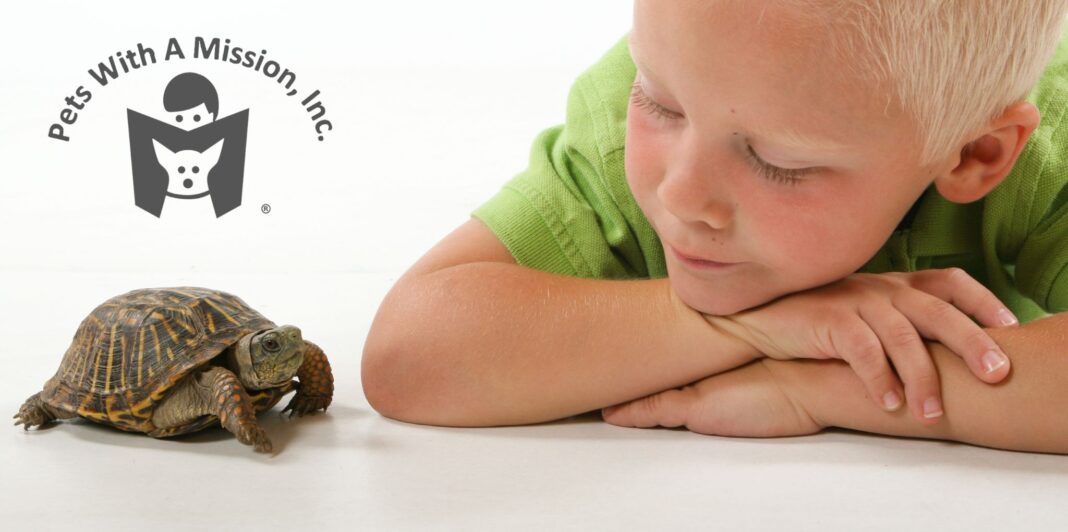Pets With A Mission, Inc.: Let’s Get Social
Domestic animals, especially dogs and cats, need to learn how to live in the world around them. Most likely, they will encounter, people, other animals, things, and a variety of situations in that world. Socialization is the process in which our dogs and cats become familiar with people, places and things in their environment and develop attitudes about them. We want to have happy and confident pets who are reasonably social and adaptable. Hopefully, they will learn to willingly accept known people, animals, and things and calmly tolerate, if not welcome, new people, things, and situations.
Newborn animals start learning about their environment immediately after birth. Quickly, they must learn how to find mom’s dinner table and how to work around siblings getting in their way. Their world expands when their eyes open and more so when they learn to coordinate walking on four legs. They learn to play and play fight with siblings. If they live in a family home, they will interact with people in the household. At eight weeks old, and after they have had their puppy or kitten shots, they need to be exposed to people and situations outside their immediate environment. For example, they should meet many people, including men and women, toddlers, children, teens, adults, seniors and people of different ethnicities. They would benefit from meeting people who are physically able and those who have mobility challenges. They need to see that toddlers move differently from older children and adults and toddlers tend to make a lot more noise. Young animals also need to be exposed to a large variety of things such as car rides, boxes, blankets, brushes, bicycles, crates and pet carriers, laundry baskets, ceiling fans, toys, and yes, vacuum cleaners, hair dryers and lawn mowers. The exposure needs to be done in a positive manner without forcing encounters. After all, we want them to become more accepting of change instead of reinforcing their fears. Instead, use clicker training and lots of treats to introduce new things.
Recently, I adopted an eight-month-old kitten. He has learned the household rules and he is comfortable around the dogs so he is fitting in well. A couple days ago, I put on a sun hat as I prepared to work in the yard. When the kitten saw my hat, he ran for the hills. Obviously, hats were something he missed out on in his early socialization. I took off the hat. Then, I called him over and let him sniff it. After that, he could tell that a hat was not something to fear so when I put on the hat again, he was okay with it.
When an animal does not receive adequate and positive socialization to a variety of people and things when they are young, there can be negative consequences later in life. For some dogs and cats that means that they are more comfortable and accepting of their own species and less so with people. Often they are fearful of people, places, and things that are unfamiliar. If a kitten’s primary caregiver was an adult female and they were under socialized, as an adult they may fear men or children. If a puppy was kept out of the kitchen, they may become fearful of normal kitchen sounds such as the dishwasher, can opener, or dropped items. If a young animal is not handled frequently and gently, they may grow up to fear touching by the groomer or veterinarian. If they did not ride in a vehicle or only rode when they went to the vet, most likely they will be fearful and stressed every time they are put in a car.
If you adopt an older dog or cat or if the youngster that you brought home was not well socialized, it is not too late to work on expanding their world view and bringing about positive changes in their viewpoint. Just know that it is unlikely that you can change all their negative or fearful associations. However, with time and effort, they can become less fearful and more accepting of different things. The key is exposing them to one new thing at a time in small doses over a longer period of time. Make sure that each encounter ends on a positive note, and give them lots of really good treats and praise. If Fluffy was under socialized with a variety of people, she may never become a social butterfly who happily greets people while out on a walk. But it is likely that she can learn to calmly accept people approaching and moving past her on a neighborhood walk.
In addition to expanding their acceptance of the world around them, there are other benefits to ongoing socialization of our pets. Exposing pets to new things provides brain stimulation. Most animals enjoy learning new things especially if training/socialization sessions are short and end on a positive note. Socializing a pet can be an enjoyable bonding time between people and animals.
Socialization of animals greatly aids in their comfort and understanding of the world around them. It should begin early in puppyhood and kittenhood and continue throughout their lives. Older animals who were under socialized when they were youngsters can benefit from socialization as adults. Older animals my never completely overcome their fears but they are capable of improving their view of the world but they may require more time to change their attitudes about people, things, and situations.















